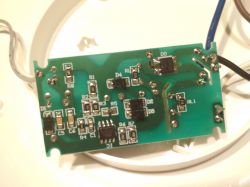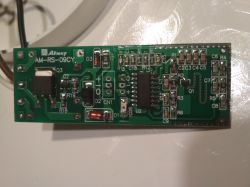Hello,
After a long search, I finally found a nice looking and well lit LED lamp for the bathroom. The problem is that it has a built-in motion and dusk sensor, which only annoys. Not only does it turn off the lamp 53 seconds after it is turned on, it also buzzes when the lamp is on. The motion sensor itself also does not work as it should and to make the lamp turn on again, you need to wave the towel under the ceiling
As the lamp is cool, instead of replacing it with another, I would just like to break these sensors. And since I know electronics as much as I can sometimes solder my question.
Could someone advise what he is responsible for and what should be dumped / omitted in the system of this lamp? Pictures in attachments.
From what I can see, the phase wire enters the motion sensor. I just don't know why two wires (white and black) come out of this sensor and not one.
Best regards,
Adam
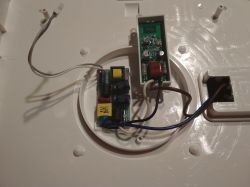
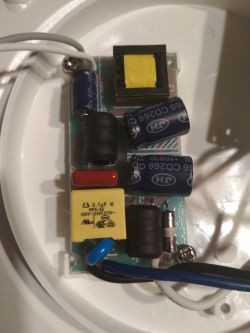
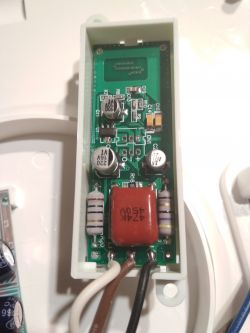
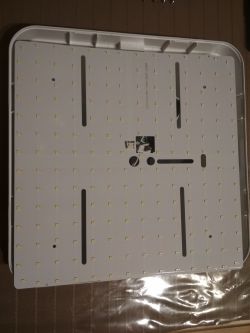
After a long search, I finally found a nice looking and well lit LED lamp for the bathroom. The problem is that it has a built-in motion and dusk sensor, which only annoys. Not only does it turn off the lamp 53 seconds after it is turned on, it also buzzes when the lamp is on. The motion sensor itself also does not work as it should and to make the lamp turn on again, you need to wave the towel under the ceiling
As the lamp is cool, instead of replacing it with another, I would just like to break these sensors. And since I know electronics as much as I can sometimes solder my question.
Could someone advise what he is responsible for and what should be dumped / omitted in the system of this lamp? Pictures in attachments.
From what I can see, the phase wire enters the motion sensor. I just don't know why two wires (white and black) come out of this sensor and not one.
Best regards,
Adam







